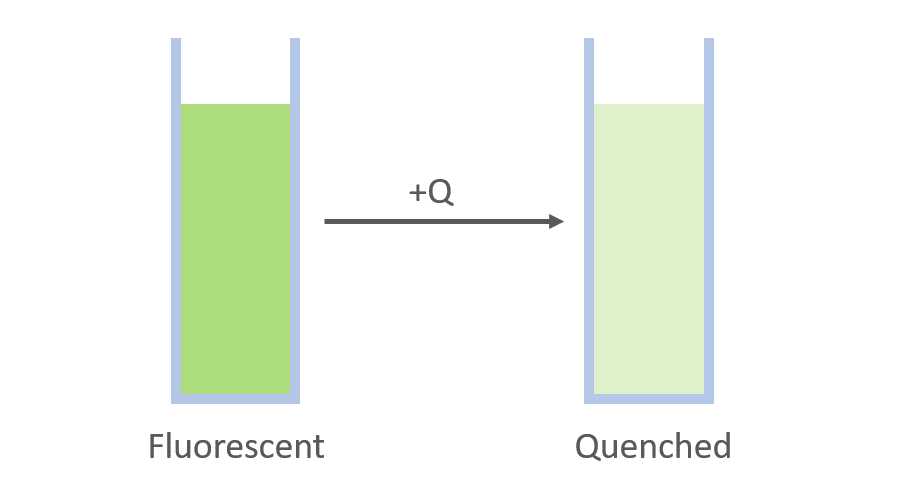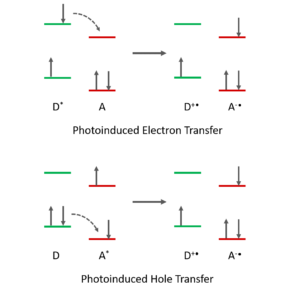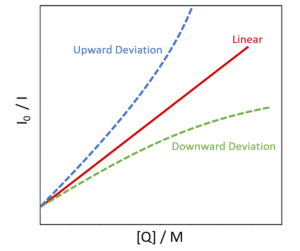Fluorescence quenching is the decrease in fluorescence intensity of an emitter due to interaction with a quencher. A quencher is a chemical species that increases the non-radiative deactivation rate of an emitter molecule from its excited state and therefore reduces the light emission from the population of excited molecules.
Quenching may involve either a transfer of charge or a transfer of energy from the excited emitter molecule – often named the donor (D*) – to the quencher molecule (Q). Many molecules can act as fluorescence quenchers including molecular oxygen, heavy atoms such as bromine and iodine, and nitroaromatics.

Fluorescence quenching can be grouped into three main types:
The type of quenching and its dynamics can be analysed using a Stern-Volmer Plot.
Dynamic quenching, also called collisional quenching, is a diffusion-mediated process that depends on the diffusion of an emitter or a quencher through a medium. The decrease in emission intensity is due to the enhancement of the non-radiative deactivation rate from collisions between the emitter and quencher molecules. Since collisional quenching affects the excited state of an emitter, the fluorescence lifetime changes with the introduction of different concentrations of quencher into the system while the absorption spectrum is not affected.
Static quenching is a non-diffusion mediated process that occurs when an emitter and quencher interact and form a new non-emissive species. The emission intensity of the system is quenched due to a reduction in the number of available emitter molecules. In contrast to dynamic quenching; the absorption spectrum likely changes, but the fluorescence lifetime of the excited state of the emitter is not affected.
The final type is trivial quenching. Trivial quenching is caused by optical artefacts during the fluorescence measurement, such as the inner filter effect and scattering leading to an apparent decrease in emission intensity. This is not true quenching and should be avoided or accounted for during fluorescence quenching measurements.
Various photophysical mechanisms can cause fluorescence quenching, with three of the most important mechanisms being:




